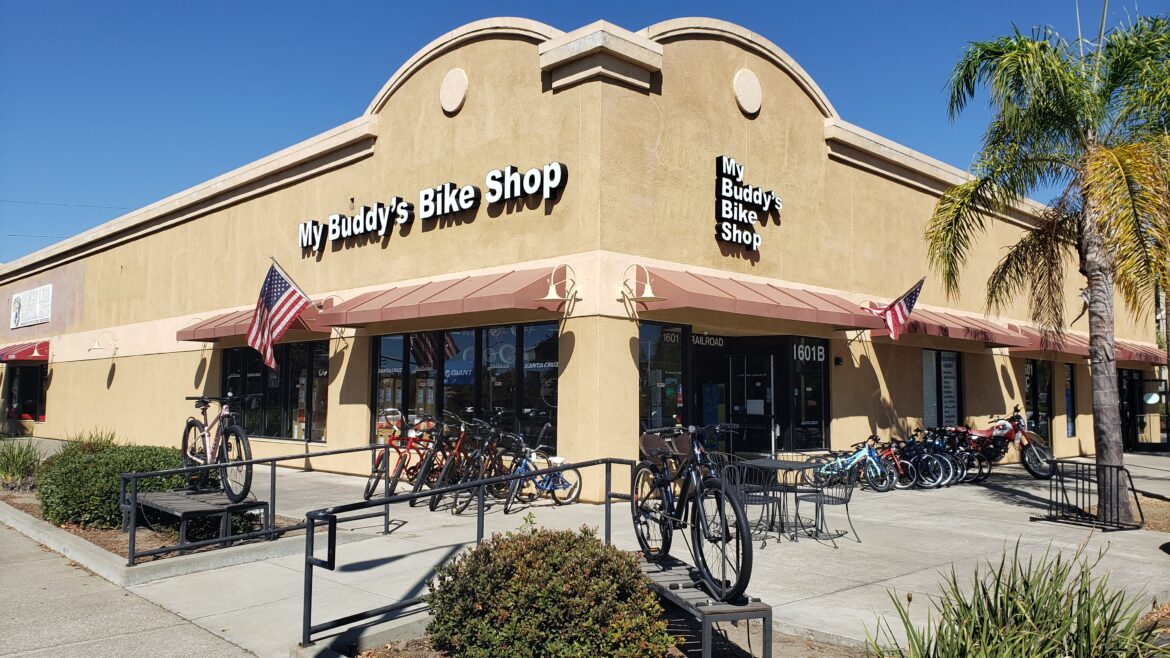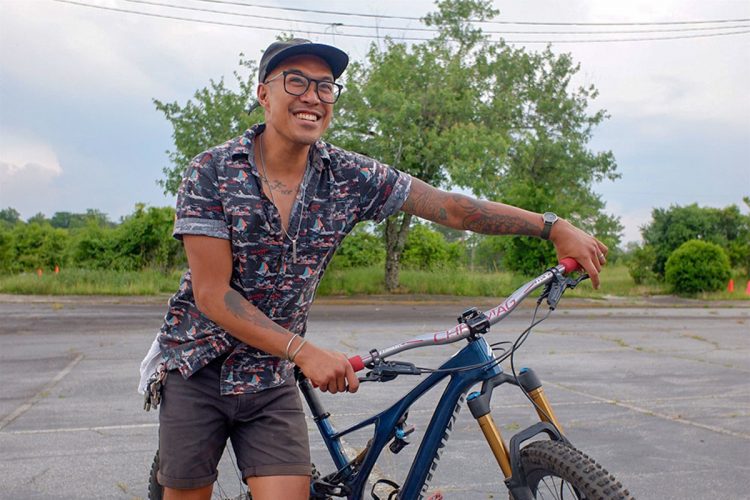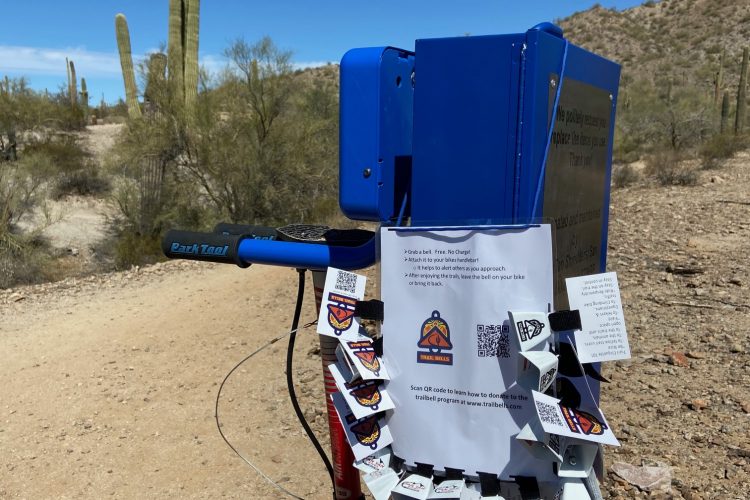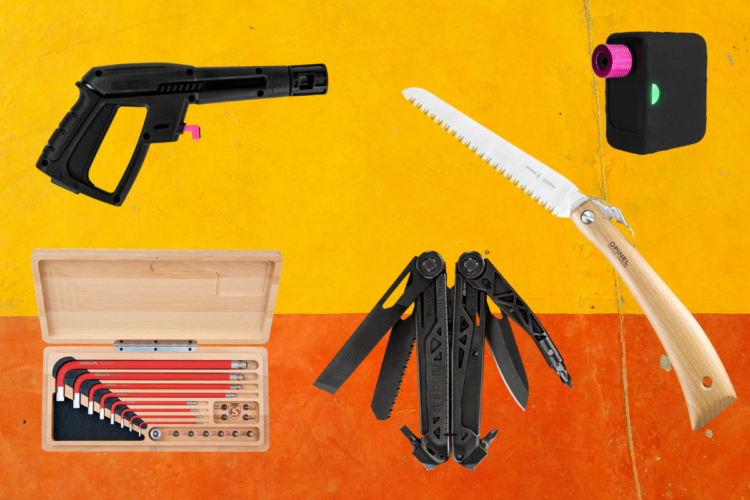
Two years after the start of the pandemic, the world is returning to “normal.” What is normal these days? It’s probably not a labor shortage, record inflation, or skimpy supply. However with a potential transition from pandemic to endemic, the return of sporting events, lifted mask mandates, and more people traveling again, it’s fair to conclude that most people aren’t pondering how they’ll spend their summer within the confines of their own neighborhood.
Confinement and the embracing of outdoor activities — seen as safe when compared with indoors — is primarily why so many people picked up a bike in the spring and summer of 2020. Without the same restrictions in place though, are people falling out of love with bikes as quickly as they fell in love with them?
Companies like Zoom, Netflix, and Peloton all saw spikes in demand early in the pandemic and have now seen falling stock prices as people go back to gyms and offices. Metropolitan State University of Denver professor Darrin Duber-Smith, who studies marketing and consumer behavior, doesn’t see the interest in outdoor recreation dropping as drastically as some of these tech products.
“I think Netflix [and Peloton] — those are two examples of very specific situations.” Netflix’s competition has grown and Peloton realizes that there is more money to be made selling subscriptions instead of equipment.
“Really anything outdoors benefitted from [the pandemic],” said Duber-Smith. “And, I think it’s long-term.”
To get a closer look at what’s stuck and what hasn’t, we spoke with a handful of bike shops around the country, starting with one in Atlanta.
A dissipating boom and lingering effects
It was more than a year ago we last checked in with Earl Serafica at Earl’s Bike Shop in February of 2021. At that point, he’d sold all of his 2021 models and many of his backorders were held up by component shortages. Serafica deadpanned customers when they asked when their new bike might show up, explaining they were in a supply shortage. With frames and components sourced from all over the globe, the bike industry was one of the first to feel the pinch. Demand has slowed for Earl’s Bike Shop since the pandemic’s start, but it’s still been strong.
“I personally think the boom is gone,” said Serafica. Atlanta’s mask mandates recently expired, people are out watching movies and going to events. Earl’s Bike Shop has several full-suspension bikes sitting on his showroom floor. He attributes this partially to receiving shipments so much later than when demand was strong.
Serafica explains they don’t have a shortage of customers, but it wasn’t what it used to be. Many casual riders looking for a bike couldn’t find one and gave up or moved on to a different hobby.
“I think people have just given up [because] the bike they want is not available,” he said. “It’s tough.” What used to be the budget range — between $500 and $2,000, which new riders were clamoring for — is now gone. Thanks to inflation and scarcity, his base model $500 hardtail is now $700 and his higher-end mountain bikes have increased in cost by 10-20%.
He believes the sport has retained new riders and continues seeing people he sold bikes to a year or two ago riding around on two wheels. He’s an advocate for group rides and folding new cyclists into the community, and there are dozens of group rides around Atlanta every week.
‘It’s a Whole New Way of Doing Business’
For bike shops around the country, running a viable business even in the face of demand and deposits has only gotten stickier. For Serafica every product order is a gamble.
“Shops have had to figure out how much they’re going to backorder and how much they’re going to bring in,” said Serafica. “And that ties up credit and that ties up cash flow.”
Last year he ordered mountain bike frames because there weren’t complete builds available. Eventually they sold but it took a while. When a popular bike from a brand he carried launched in late 2020, he got his hands on a few and they quickly sold. When he reordered some and they arrived months later, interest was gone and he had about $30,000 worth of bikes taking up space on his showroom floor and his credit line.
Supply is still limited, so he orders as much of what he can get. Sometimes it’s apparel, sometimes tires, or drivetrain components. Whether shops are hoarding or passing on orders, it’s a risk.
Eric Francis, the owner of Pedal Pushers Cyclery in Golden, Colorado described comparable decisions. Before the pandemic he could order a select number of bikes on a rolling basis through a distributor and they showed up in a week. Now, he has orders for certain brands through 2025.
“We’re buying strategically so far in advance these days,” said Francis. Pre-pandemic, Francis would limit the inventory on his showroom floor to keep credit available. He always saw too much stock as the demise of many shops. Now he doesn’t have a choice.
“I’ve been taking an absurd, absurd amount of bikes.”
If he doesn’t take advantage of an order, brands offer it to the next retailer and he has no idea when he’ll have another chance. Francis calls it “forced purchasing.” Some brands have come around with available bikes two years after he requested them. When he tried to pare down his order because he didn’t need them all anymore, he was told it was all or nothing.
“I’m hoping that I make the right move,” said Francis. “Otherwise I’m going to be sitting on hundreds of thousands of dollars of bikes that don’t move. But I’d rather have that than no bikes.”
Many of the orders he’s bringing in are ones that customers have been waiting a year for. He’s still selling a $5,000 bike per day, on average and gearing up for another good season, though finding employees has been more challenging than ever.
Francis has had to raise prices on some products. He says he’s paying more to manufacturers and his profit margins have shrunk because MSRPs have stayed the same.
More e-bikes and more service options

Chris Beratlis opened My Buddy’s Bike Shop in Livermore, California in 2016. Like most shops, they saw a surge in “bread and butter bikes”: the more affordable bikes near the $1,000 mark.
Since the spring and summer of 2020, Beratlis says sales in that category have “slowed down significantly. But with Covid, those sales were unusually high.” He’s heard the same from other shops in the area. Sales of kids bikes have slowed noticeably too.
There aren’t as many new customers coming into the retailer to explore new bikes, although the shop is still busy. Beratlis believes that they’ve retained many of the new riders gained from the pandemic and there is a bigger pool of bicyclists now.
What they have seen an increase in lately are e-bike sales, “Like you wouldn’t believe.” My Buddy’s Bike Shop is selling almost all e-bikes and many of their mountain bikes have sat on the showroom floor for over a year.
West End Ski and Trail opened in the summer of 2019 in Ishpeming, Michigan, a town about 25 minutes west of Marquette. When we visited West End in the summer of 2020, owner Spencer Prusi said had they not opened around the time of coronavirus, they may not have fared as well as it did, but West End experienced the bike boom to the full extent.
Now, the shop is seeing similar trends as others we spoke with.
“We have experienced a decrease in demand for some bikes,” Prusi said over email. “People are not busting down the door for the less costly ($500-$1900) bikes. We are however still receiving demand for nicer bikes and some bike path style e-bikes. Supply is the challenge.”
Prusi said they likely have fewer bikes on order from customers this year compared to last, and bikes are still slowly trickling in, making it “tough on revenue and cash flow to some degree.”
With bikes slow to come, he’s focusing on other options. West End is building a bike wash inside their new location and customers can use it, or they can add a wash as part of a service with refillable Muc-Off products. They are also using Ride Wrap’s new Super Cutter software so customers can bring their bike in and have it professionally wrapped and protected.
“The best thing we can do is to stay positive and adapt with the times,” said Prusi.
The bigger picture
Dirk Sorenson of the NPD group, which tracks consumer and industry trends, wrote at the end of last year that the cycling market only grew its revenue by 3% between October 2020 and October 2021.
“This single-digit growth is a bit disappointing but understandable given the 45% growth that occurred between the 12 months ending October 2020 versus 2019. Without a doubt, the unprecedented growth that occurred in the prior period was a direct result of consumers buying products that allowed for more at-home and around-the-home activities.”
Despite a slowing market he doesn’t expect the market for bikes to slow to a crawl anytime soon. E-bike revenue grew by 47% between October 2020 and October 2021, highlighting what My Buddy’s Bike Shop is seeing in California.
Supply chains and challenges will eventually straighten out and Sorenson sees supply improving currently. The Build Back Better Act may improve cycling infrastructure and incentivize commuting and provide more credits for e-bikes.
A seesaw of component availability
Is SRAM or Shimano doing a better job of getting parts into bike shops’ hands? The consensus was that it’s been hit and miss for both. Some said Shimano has done better at times, and others said SRAM has been more consistent.
“It’s been a seesaw, back and forth between [Shimano and SRAM]” said Francis of Pedal Pushers. “It seems like when SRAM has parts Shimano doesn’t and when Shimano has parts, SRAM doesn’t.”
The shops all believe it will take time for supply to improve. Earl Serafica expects a minimum of 18 months before inventory levels out. Prusi of West End thinks it may be two more years. “I hope we start to see things normalize in 2023,” he said, “but I feel it’ll be more like 2024.”
Though demand has subsided, Francis likened the bike boom to Lance Armstrong’s effect on road cycling in the 1990s and early 2000s, where a singular force drew hordes of novel riders, many of whom stuck around.
“The huge fighting frenzy is gone, but demand is still there and it’s never going to go away.”
























5 Comments
Mar 24, 2022
Mar 23, 2022
Mar 24, 2022
Mar 22, 2022
Mar 23, 2022
Will be interesting to see how the e-bike segment's market share does over the next few years, as that seems to be the new growth sector of the bike industry.